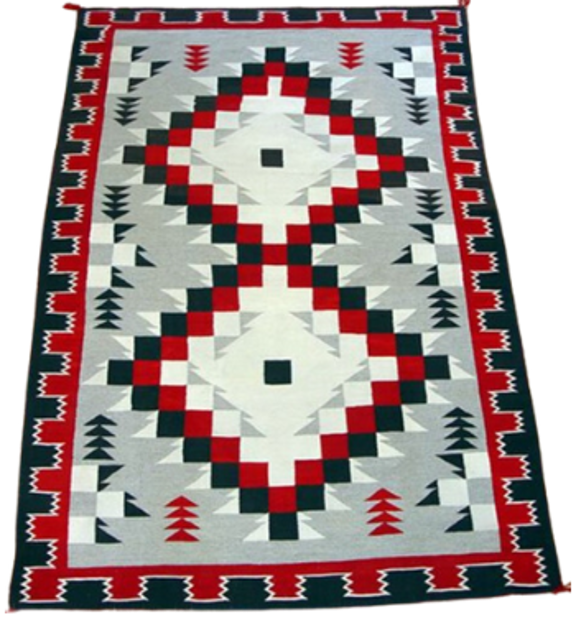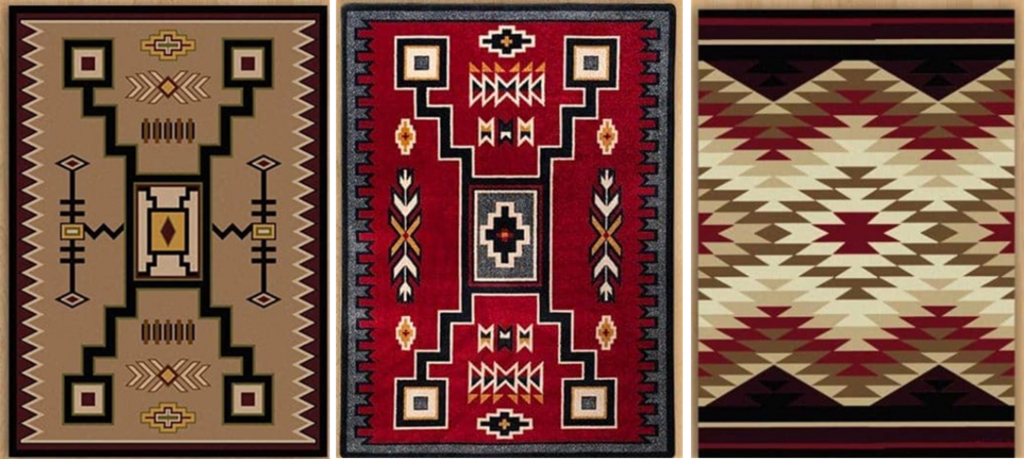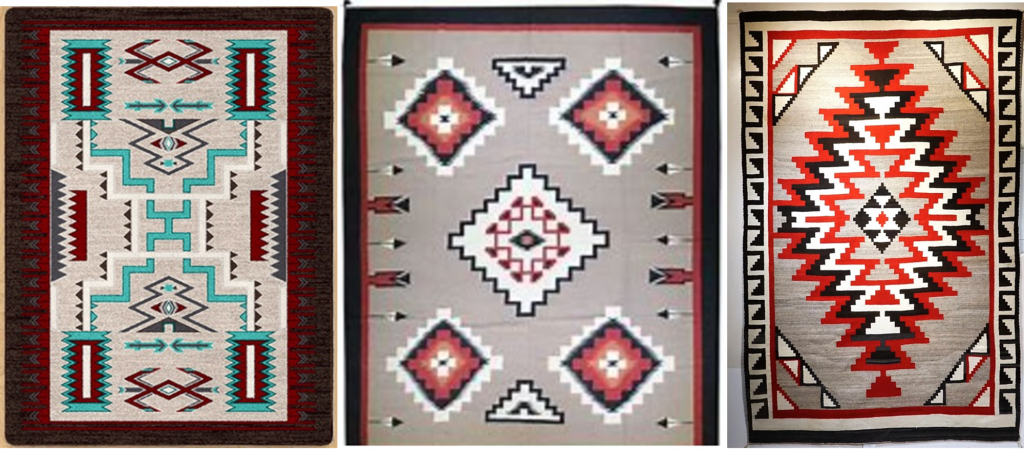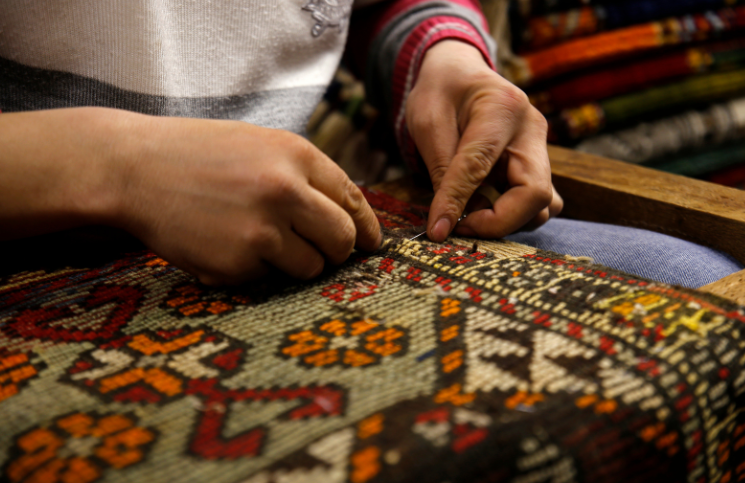by Cathie Maglio
The Language of Geometry in Indigenous People’s Rug Making
Some of the most beautiful and prized pieces of art in this country are the rugs woven by Indigenous People, especially the Navajo tribe. I became aware of this art form thanks to the PBS television show “Antiques Roadshow” where I have seen rugs appraised in the thousands of dollars.
Rugs have been woven by Navajo women for centuries. They serve a functional purpose while also acting as a representation of their beliefs, heritage, and way of life. The patterns on these rugs tell stories of the Indigenous Peoples’ traditions, spirituality, and community. The stories use the language of mathematics, specifically geometric figures.
The weavers build their patterns using simple geometric figures such as circles, triangles, diamonds, zigzags or lightning bolts, spirals, and crosses. The arrangement of these figures tells stories of their life and traditions. Stars, arrows and other shapes may also be part of the design. Weavers can create beautiful patterns using just one or two figures, or many.
The rug below uses mostly diamonds and triangles to represent landscapes. This rug, using just diamonds and triangles, might tell the position of two connected camps surrounded by a forest. Rugs like this record and communicate tribal histories that are handed down to future generations.
Let’s look at these symbols and their meanings.
Circles: Circles are a basic geometric shape. They can be used to symbolize the cycle of life, or the sun which is the source of life and energy. The circle can represent the interconnections and interdependencies between all living things.

Diamonds: The diamond is a quadrilateral with equal sides. It represents balance and harmony. Diamonds are used in rug patterns to represent the delicate balance between nature and humanity. Because the diamond has four corners, its placement can indicate the four directions and its orientation can tell a story or record an event.
Zigzag or lightning bolt. These geometric figures follow a repeating pattern and are used to represent lightning. These zigzags can be symbols of danger, or of protection from harm.
Spiral: Spirals are mathematical shapes found in nature, such as shells, seed patterns in flowers, and galaxies. Spirals are used to indicate evolution, growth, and the cyclical nature of life. When used in a rug pattern, the spiral typically symbolizes the journey of life.
Cross: A cross is formed by two intersecting lines or rectangles. A cross represents intersection and balance. Because the cross reaches horizontally and vertically, it symbolizes the connection between the earthly and spiritual realms.
The patterns woven in these rugs also use mathematical transformations to create the designs. Most rugs have both vertical and horizontal symmetry. Mathematical transformations include:
- Translations: An object is moved without changing the shape. The size, shape and orientation stay the same.
- Reflections: An object is flipped on an axis forming a mirror image.
- Rotation: An object is rotated or turned, often 90 degrees.
Below are samples of Indigenous rugs that use these geometric figures.


Indigenous rug art is a testament to the connections between geometry, culture, and the natural world. The geometric elements demonstrate the mathematical precision of their creators while maintaining the connections to the spiritual and cultural significance of the shapes.
We can gain insight into the rich tapestry of Indigenous cultures and their enduring traditions by understanding the cultural symbolism of geometric figures. These rugs bridge the past and the present. They endure as symbols of a heritage and identity that is an important component of American history.
Cathie Maglio is a mathematician and a JFYNetWorks Learning Specialist.
Other posts authored by Cathie can be found here.
HOW ARE WE DOING? In our pursuit to serve up content that matters to you, we ask that you take a couple of minutes to let us know how we’re doing? Please click here to be navigated to our JFYNet Satisfaction Survey. Thank you!





